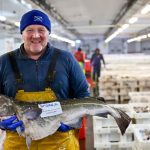Scientific research shows that salmon is a healthy, delicious and versatile source of nutrition. But many wild salmon populations are in trouble and could be facing the same fate as east coast cod stocks. The answer is to farm the species in a better way. The controversy over farmed versus wild salmon has been ongoing in B.C. since the first salmon farms were built in the early 1980s.
It is evident that fish farms that use open-net pens in the ocean can harm wild stocks. Some of the dangers include escaped farmed fish – which are mostly Atlantic salmon – competing with the five species of wild Pacific salmon, pollution from the farms harming the areas where salmon live and migrate and lice infestations threatening the very survival of some stocks. It’s a trade-off that doesn’t make much sense.
Now the better management is that we should protect our wild stocks to ensure they provide us with food well into the future. But wild salmon face many other threats, including overfishing, habitat loss and climate change, and we don’t yet understand all the factors contributing to their decline.
Eating salmon regular could only be possible through farming. Raising salmon in a way that eliminates interaction with the environments where wild salmon live has long been suggested as a way to overcome the worst effects of farming fish. The technology is still new, though, and farming salmon, no matter how it is done, comes with challenges. One of the biggest is that salmon is a carnivorous fish – it requires other marine resources as feed.








